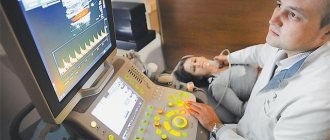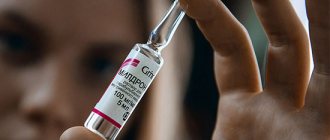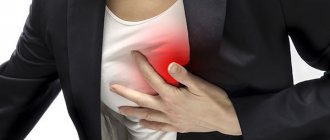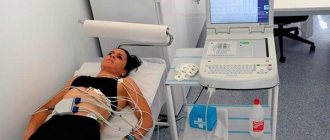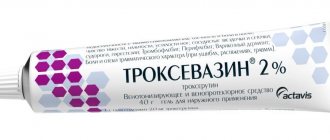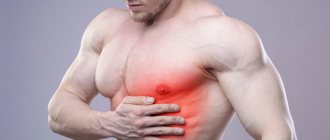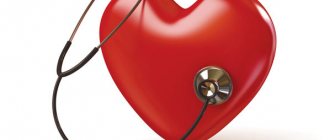1.Primary therapy for myocardial infarction
If you have a myocardial infarction or an attack of unstable angina, emergency care is more important than ever.
Its task is to restore blood flow to the heart. The principle of treatment for heart attack and angina is the same. Treating angina can help prevent a heart attack, and helping with a heart attack can help reduce damage to the heart.
Patients with a heart attack and unstable angina begin to receive care in the ambulance on the way to the hospital. The goal of primary therapy is to prevent permanent damage to the heart muscle and normalize blood flow to the heart.
Typically, doctors use oxygen therapy, nitroglycerin (which opens the arteries of the heart and helps blood flow), and beta blockers for these purposes. These drugs reduce heart rate, blood pressure, and workload on the heart. Special medications will help cope with the pain of a heart attack and angina.
Most likely, another drug in the first stage of treatment for myocardial infarction and angina will be a drug that prevents the formation of blood clots. Some of them, such as aspirin, can be taken even before the ambulance arrives. Others, such as antiplatelet drugs, anticoagulants, glycoprotein inhibitors, thrombolytics, are usually available from doctors.
A must read! Help with treatment and hospitalization!
Life after a heart attack
Currently, coronary insufficiency and myocardial infarction are one of the main causes of death and disability among the population of most industrialized countries. According to WHO experts, mortality from cardiovascular diseases will steadily increase in the coming decades. In Belarus, the situation with cardiovascular diseases in general and myocardial infarction in particular is also alarming.
More than 4,000 cases of this disease are registered annually in Minsk alone, of which up to 25% are people of working age. According to the City Cardiology Center, 90% of patients of working age, as a rule, return to work, of which 35% are fully employed and in their previous profession.
This means that a heart attack in itself is not a death sentence, and life continues after it, but it makes adjustments to the patient’s thinking, his lifestyle, his attitude towards himself and others.
WHAT IS A MYOCARDIAL INFARCTION?
WHAT PSYCHOLOGICAL PROBLEMS DO THE PATIENT ARISE?
AND HOW TO OVERCOME THEM
Myocardial infarction is the acute and most severe form of coronary heart disease, in which a section of the heart muscle dies as a result of blockage of the coronary artery that supplies it with blood.
Myocardial infarction itself is a severe stress for the patient. He is instilled with constant fear of a possible recurrence of a heart attack.
The patient is constantly harassed by:
Internal tension— concern for the outcome of the disease, for the well-being of the family, for work, for the future prognosis. In this case, you need to contact a psychotherapist or a psychologist , who will help you calm down and calm your worried relatives.
Fear of developing a recurrent myocardial infarction and sudden death “from a heart attack.” Anxiety increases with physical stress, leaving the house, or moving away from a place where medical care can be provided. Such patients should walk gradually, increasing their mileage daily, go out with an escort in the first days, and have nitroglycerin with them.
Unjustified concern for your health . Patients often and without reason count their pulse, measure their blood pressure, and visit various specialists. In such a situation, you need to talk with your doctor, psychologist, psychotherapist, and switch your attention to other events in life in order to divert attention from unreasonable fears.
Psychasthenia syndrome - a person is overcome by general weakness, a feeling of constant fatigue, irritability, sleep disturbance, decreased performance . There may be a depressed mood, apathy, a feeling of hopelessness, tearfulness - depression syndrome . In these cases, it is necessary to consult a psychotherapist. The patient must be explained that a heart attack is not a death sentence.
Not often, but there are also cases of “disease denial,” when the patient refuses to believe that he has a serious illness and ignores the doctor’s recommendations. It should be remembered that for a patient who has suffered a myocardial infarction, both overestimation of the severity of his condition and its underestimation are equally dangerous.
METHODS OF REHABILITATION OF THE PATIENT
Currently available methods of rehabilitation (restorative treatment) of patients after myocardial infarction can be combined into two groups: non-pharmacological and medicinal.
Non-drug treatment methods involve, first of all, changes in lifestyle and lifestyle. This includes:
To give up smoking. Quitting smoking for two years reduces the risk of coronary death by 36%.
Normalization of body weight. To assess the correspondence between weight and height, the body mass index is used. In order to calculate your body mass index (BMI), you need to divide your weight in kilograms by your height in meters, squared, according to the formula:
BMI= weight (kg)/height (m²)
Normal index values are 20-25 kg/m². An increase in the index to 25-30 kg/m² indicates the presence of excess body weight, more than 30 kg/m² - obesity.
Changing the nature of nutrition. The main goal of the diet is to reduce cholesterol and other atherogenic blood lipids while maintaining the physiological completeness of the diet.
It is necessary to give preference to a diet low in saturated fat and cholesterol, with sufficient amounts of vegetables, fruits, and grain products that will provide the body with essential vitamins, minerals, fiber (fiber) and complex carbohydrates. This includes :
Regular consumption of a variety of vegetables and fruits - at least 400 g.
Moderate consumption of dairy products - (0.5-1% fat content) milk, low (20%) fat cheeses, low-fat cottage cheese, yogurts, buttermilk.
Give preference to fish , including fatty fish (cod, haddock, flounder, herring, sardine, tuna, salmon). Fish should be present in the diet at least 2-3 times a week.
From meat products, choose meat without streaks of fat: turkey, chicken, veal, game, rabbit, young lamb.
Consume no more than 2-3 eggs per week . Limit your consumption of yolks.
Recommended drinks : tea, black coffee, water, sugar-free soft drinks.
Consume sugar only in moderation, table salt - less than 5 grams per day.
Limit (it is better to completely refuse) the consumption of alcoholic beverages - less than 30 grams of pure alcohol for men and 20 grams for women per day.
A balanced diet should be combined with systematic physical training . Under the influence of moderate-intensity physical training, there was a reduction in overall mortality by 23% and sudden death by 37% in patients who had previously suffered a myocardial infarction.
Physical activity also includes household activities : housekeeping, seasonal work in the garden or vegetable garden, walking up the stairs instead of using the elevator, walking to work and home, etc.
Before starting physical activity, you should talk to your doctor! We must always remember that along with the positive effect, inadequate physical activity can lead to the development of severe complications during the course of the disease .
It is impossible to give a single recommendation for all patients regarding the timing of the resumption of sexual activity . In the vast majority of cases, this is one to one and a half months from the date of the heart attack. But it is better to consult your doctor on this issue.
Know and control blood pressure. In a person who has had a myocardial infarction, it should be 120/80 mm. rt. Art.
Drug treatment of coronary heart disease and myocardial infarction includes:
The first and basic rule is to constantly take medications. “And the best medicine will not help the patient if he refuses to take it.” Cervantes (1547 - 1616).
The second rule is the rule of combination therapy.
Patients who have suffered a myocardial infarction are simultaneously prescribed several drugs with different mechanisms of action. At a minimum, they must take five medications, four of which (except the second - for life):
Acetylsalicylic acid helps reduce the formation of blood clots in the heart and blood vessels and is the basis for the prevention of arterial thrombosis. Regular use of acetylsalicylic acid reduces the risk of recurrent myocardial infarction by an average of 23%.
Clopidogrel - has an antiplatelet effect, like aspirin, and requires mandatory use for at least 12 months after myocardial infarction.
Statins are drugs that lower blood cholesterol levels, are safe for long-term use, are well tolerated by most patients, and reduce the risk of atherosclerotic cardiovascular complications.
Beta blockers interrupt the signals that the body sends to the heart during exercise and emotional stress, reduce the risk of sudden death, recurrent myocardial infarction, and increase the life expectancy of patients who have had a myocardial infarction
ACE inhibitors are drugs that prevent the development of heart failure, increase the duration and improve the quality of life of patients who have suffered a myocardial infarction.
RECOMMENDATIONS FOR PATIENTS IN EVERYDAY LIFE
Changing your lifestyle means changing your previously established rules and habits.
Start your morning so that you have time to have a quiet breakfast and take your medications. Some medications (such as nitrates) should be taken 20-30 minutes before leaving home.
Leave the house early so that you can stand at the entrance for a few minutes, especially in the cold season.
Get rid of the habit of starting walking at a fast pace. Give your heart time to get used to, adapt to the given rhythm.
Give up the habit of rushing, running after departing transport as if it were the last bus (trolleybus) in your life.
Wherever you are (at home, at work, visiting, in the forest, at the dacha, etc.), you must have nitroglycerin (tablets, capsules, spray) with you.
If you leave home for any period, even for a short period of time, you need to have the necessary supply of the medications you take with you in order to feel safe and not create unnecessary problems for others.
It is advisable that in your purse (purse, car glove compartment, etc.) there is the latest electrocardiogram that you had at your doctor’s appointment. No one knows where you may need medical help, and then the old “film” will do a good service to your heart.
Remember! The most important rule for successful treatment and recovery after a heart attack is cooperation between the doctor and the patient.
Know! By following the recommendations outlined, you can live a long and quality life after a heart attack!
Author: Evtukh O.V. – head of outpatient
outpatient department of the GCC
Editor: Arsky Yu.M.
Computer layout and design: Zgirskaya I.A.
Responsible for the release: Tarashkevich I.I.
Health Committee of the Minsk City Executive Committee
Healthcare Institution “2nd City Clinical Hospital”
City Health Center
Minsk-2012
2.Angioplasty and surgical treatment of heart attack
Angioplasty is often done immediately after a heart attack.
. For unstable angina, especially if the risk of a heart attack is quite high, it also makes sense to have angioplasty.
Angioplasty opens a coronary artery that was narrowed or blocked during a heart attack, allowing blood to flow freely to the heart. Before angioplasty, cardiac catheterization
, during which the doctor will check the condition of the coronary arteries and determine the need and advisability of angioplasty. It is worth knowing that not all medical institutions can perform this operation, and the ambulance will not always take the patient to the exact clinic where this opportunity is available. Therefore, in the case of a heart attack or stroke, it makes sense to turn to paid hospitalization to be sure that medical care will be provided at the highest level.
Visit our Cardiology page
Use of the drug for medical purposes
What is it used for:
- elimination of insomnia;
- combating sleep disorders;
- eliminating anxiety;
- treatment of hypertension, intracranial pressure;
- epilepsy therapy;
- preparation for general arkosis.
The dosage of the drug is individual, depending on age, existing indications, and body weight. For example, to eliminate insomnia, 100-200 mg of the drug is sufficient if it is administered orally, by injection into a vein or muscle. For anxiety, the medicine in tablets is taken 3-4 times, 20 mg each. A slightly larger dosage is given to people in preparation for surgery. If a person has intracranial hypertension or epilepsy, in some cases he is put into a barbituric coma, for which the medicine is administered mainly intravenously in a volume of up to 10 mg per kg.
Do you want to know about the cost of services?
8 call our specialist
3.Bypass surgery
If for some reason angioplasty cannot be done, emergency coronary artery bypass grafting
. Sometimes bypass surgery is preferred because of the specific location of the artery blockage or multiple blockages.
After a heart attack
the patient needs to stay in the hospital for at least a few more days. All this time, doctors will closely monitor your health. Checking your pulse, heart rhythms, blood pressure, and your body's response to medications will help ensure that your heart attack is not serious.
Your doctor will likely recommend that you take medications that reduce the risk of another heart attack or complications. Ultimately, they will help maintain health and prolong life after a heart attack. These medications may include angiotensin-converting enzymes, aspirin, antiplatelet medications, beta blockers, and statins.
These medications will need to be taken over time. And perhaps throughout life. You should not violate the dosage regimen recommended by your doctor or decide to stop treatment on your own, even if you feel well. All this increases the likelihood of recurrent myocardial infarction.
About our clinic Chistye Prudy metro station Medintercom page!
Interesting Facts
In America, this drug was used to execute a death sentence, but the pharmaceutical company that produced this drug refused to supply it to prisons, which led to its replacement with analogues. Today, pentobarbital is used in countries where euthanasia (voluntary death) is allowed, as well as for “euthanizing” animals in veterinary medicine.
It was Nembutal that was used by the love of her life and Mayakovsky’s muse, Lilya Brik, for a successful suicide attempt at the age of 87.
In our country, sodium pentobarbital is included in List II of narcotic drugs, psychotropic substances and their precursors, its circulation is strictly monitored by the responsible authorities. This substance is used by drug addicts for recreational purposes (for the purpose of drug intoxication), as well as by people attempting suicide.
Pentobarbital should not be confused with phenobarbital, which is an antiepileptic drug, but is also a barbiturate.
- You can't convince me to get treatment
? - We will help you with motivation for treatment. As a rule, it is difficult for loved ones to persuade or force an addict to undergo treatment. World experts have developed EFFECTIVE motivation schemes, using which you can lead an addict to the decision to seek help. 8
4.Cardiac rehabilitation
Cardiac rehabilitation is an important part of rehabilitation treatment after a heart attack and unstable angina. Lifestyle changes can really help strengthen your heart, improve your health, and avoid heart problems in the future. The program is usually developed by doctors. But even simple actions such as quitting smoking, eating right, and moderate exercise will help you reduce the risk of myocardial infarction.
After suffering a heart attack, it is important to get regular checkups with your doctor. In addition, if changes in well-being occur, such as chest pain, weight gain or loss, shortness of breath, depression, you need to report this to a specialist.
Danger of the drug
Risk factors for overdose include:
- recreational use for the purpose of obtaining euphoria;
- combination of pills with alcohol intake;
- over-the-counter and uncontrolled use of the drug.
At risk of developing addiction and overdose are people with alcohol dependence, mental disorders, deep personal experiences and an unstable psycho-emotional background. With regular use, tolerance to the usual dose occurs, which leads to its increase, and with this an increased risk of poisoning.
Hospital treatment
Pharmacy drug poisoning is a condition that can only be helped by experienced specialists in the field of drug addiction. At home, it is very difficult to identify the entire clinical picture. It is possible to fully examine, examine, and take tests from a patient only in an inpatient setting at a drug treatment center. Specialists measure vital signs, then study the condition of internal organs, the consequences of poisoning, existing diseases, and draw up a complete treatment plan, including detoxification procedures.
Activities carried out to cleanse and restore the patient’s body in a hospital:
- gastric probing;
- artificial ventilation;
- infusion-drip therapy.
The installation of IVs is carried out to quickly remove toxins from the blood and cleanse the body, as well as normalize the water-salt, electrolyte and acid-base balance. In addition to infusions, hemodialysis and hemosorption are used, these are hardware methods of blood purification. The result of providing drug treatment largely depends on the state in which the person was initially. It is very important to start providing assistance on time; the sooner you seek professional help, the fewer negative consequences a dangerous pharmaceutical drug will leave behind.
Providing emergency assistance
Even a minor overdose is a serious reason to call an emergency doctor at home. It is important to make a call in time, as the victim’s condition may worsen. The primary task of doctors in case of intoxication is to remove toxins from the human body as quickly as possible. If the victim is conscious, the stomach is cleansed, it is necessary to give him as much water as possible, adsorbents and induce vomiting so that toxic substances stop being absorbed into the blood through the gastrointestinal tract. If there is paralysis of the respiratory system, it is worth giving the dependent person artificial respiration until the doctor arrives.
It is worth entrusting all other rehabilitation and medication measures to doctors. Specialists will examine the patient and, based on express diagnostics, will be able to select symptomatic medications, in particular, diuretics.
